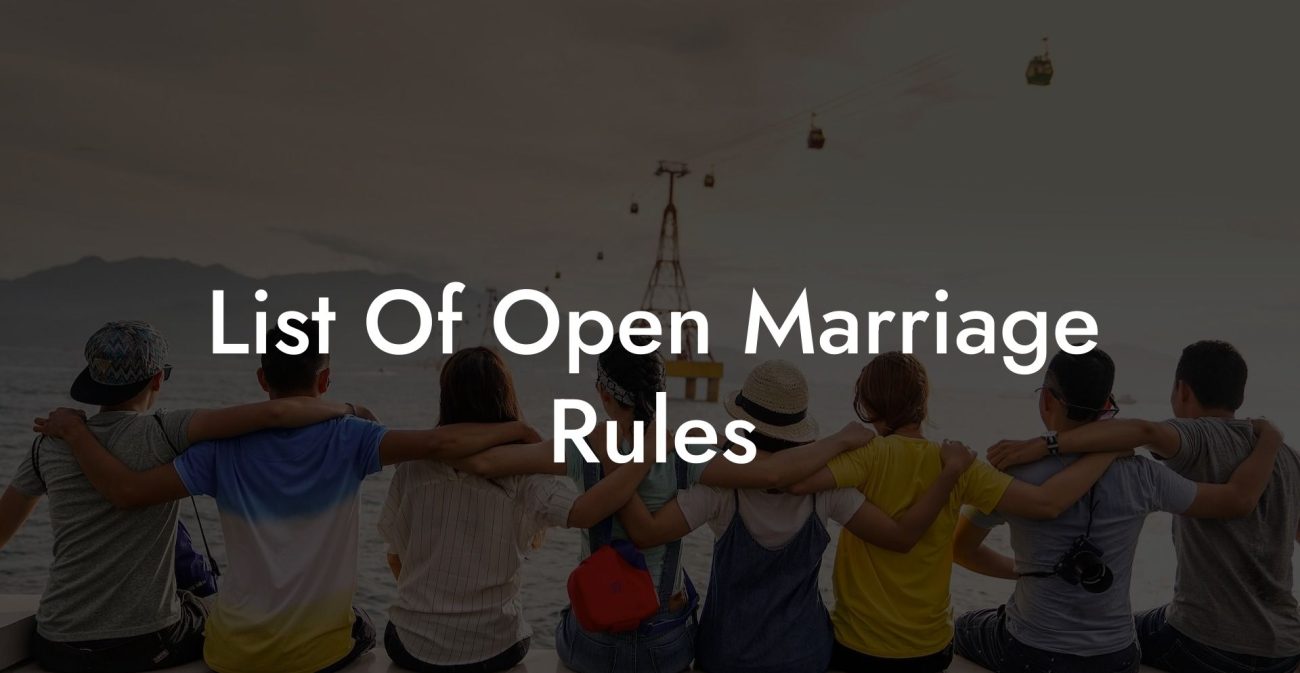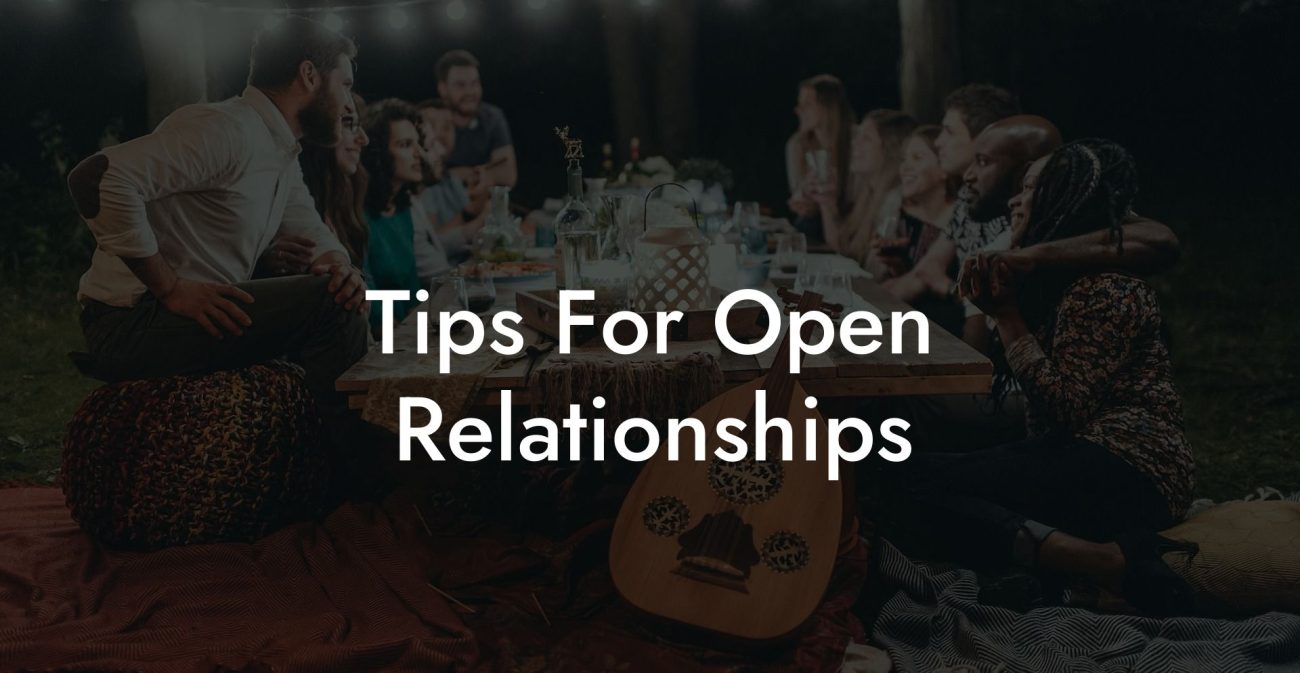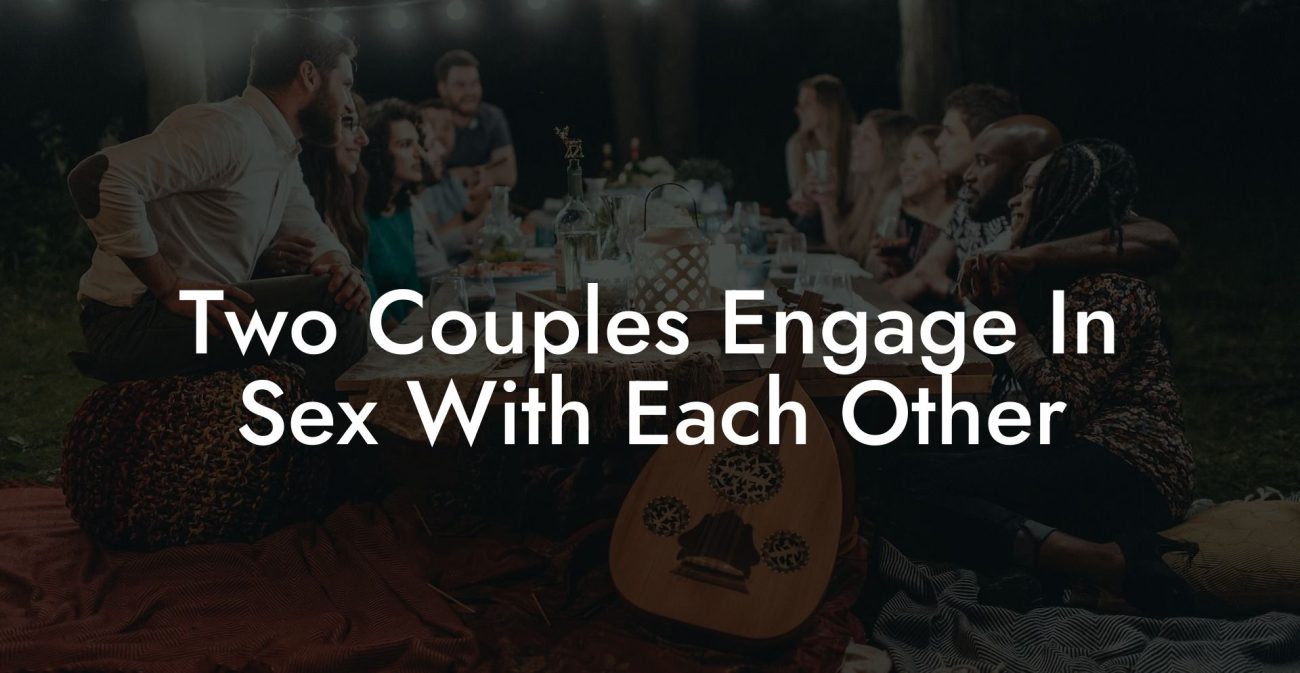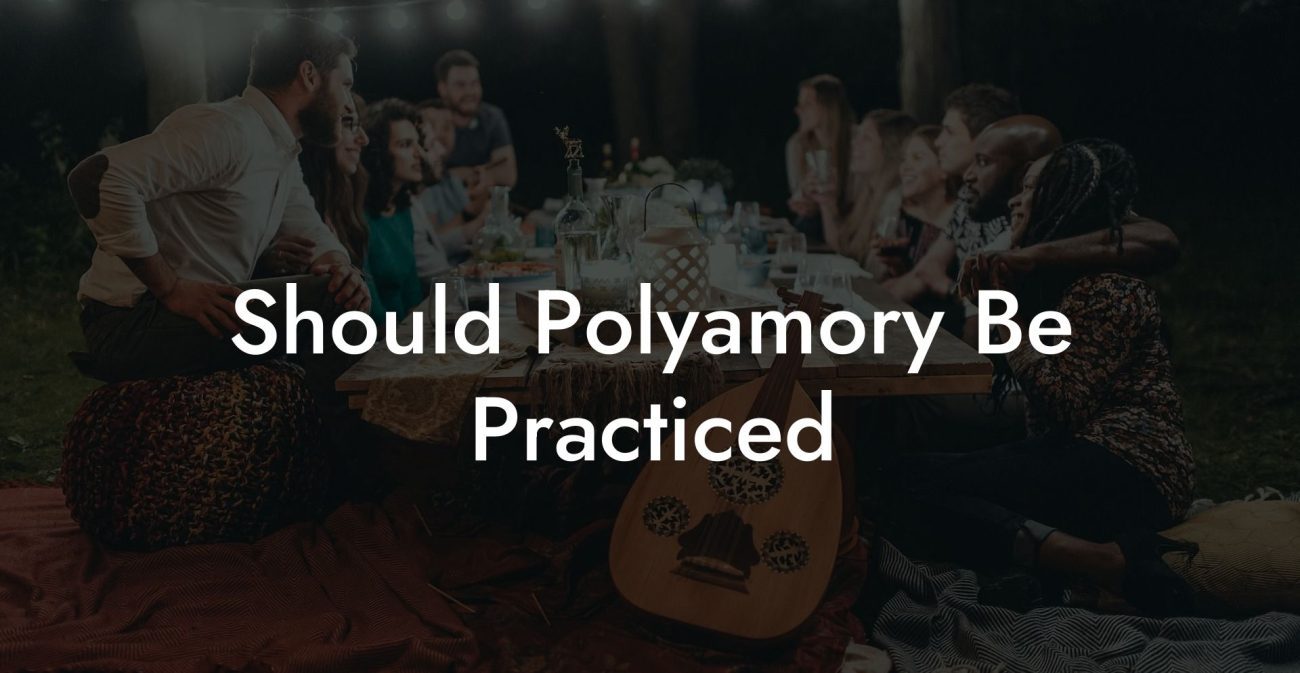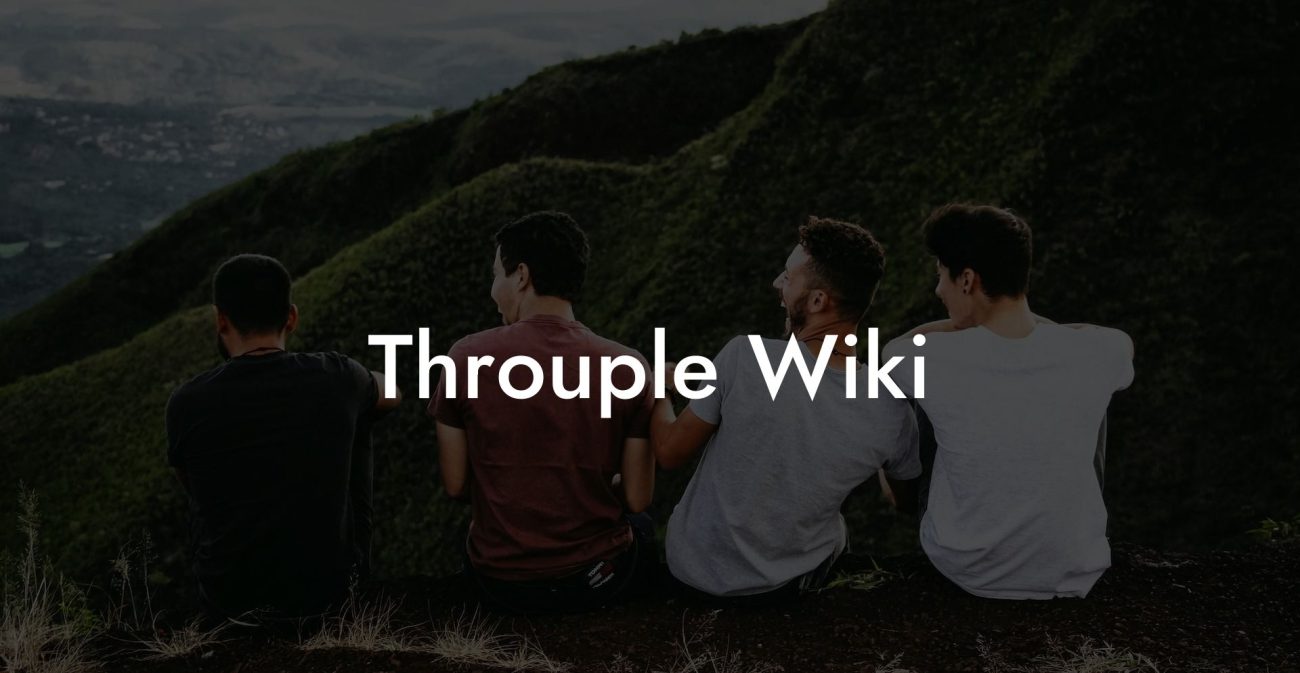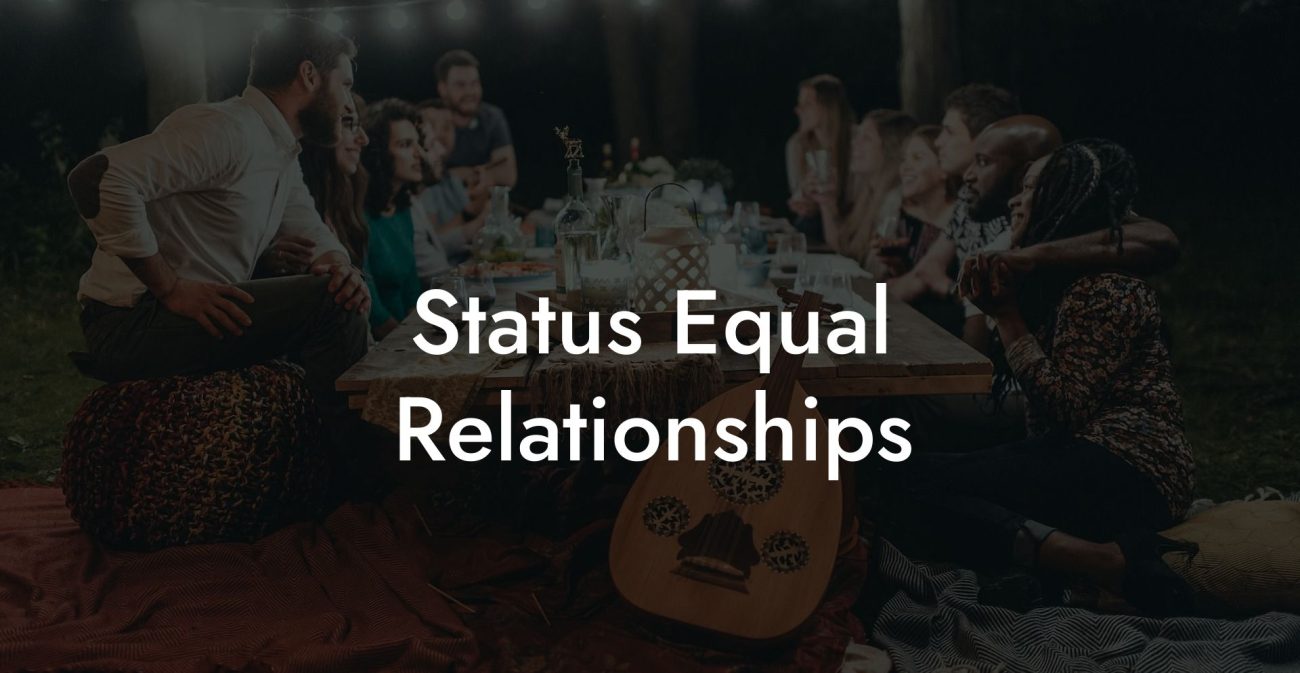Alternative Relationships: Definition & Meaning
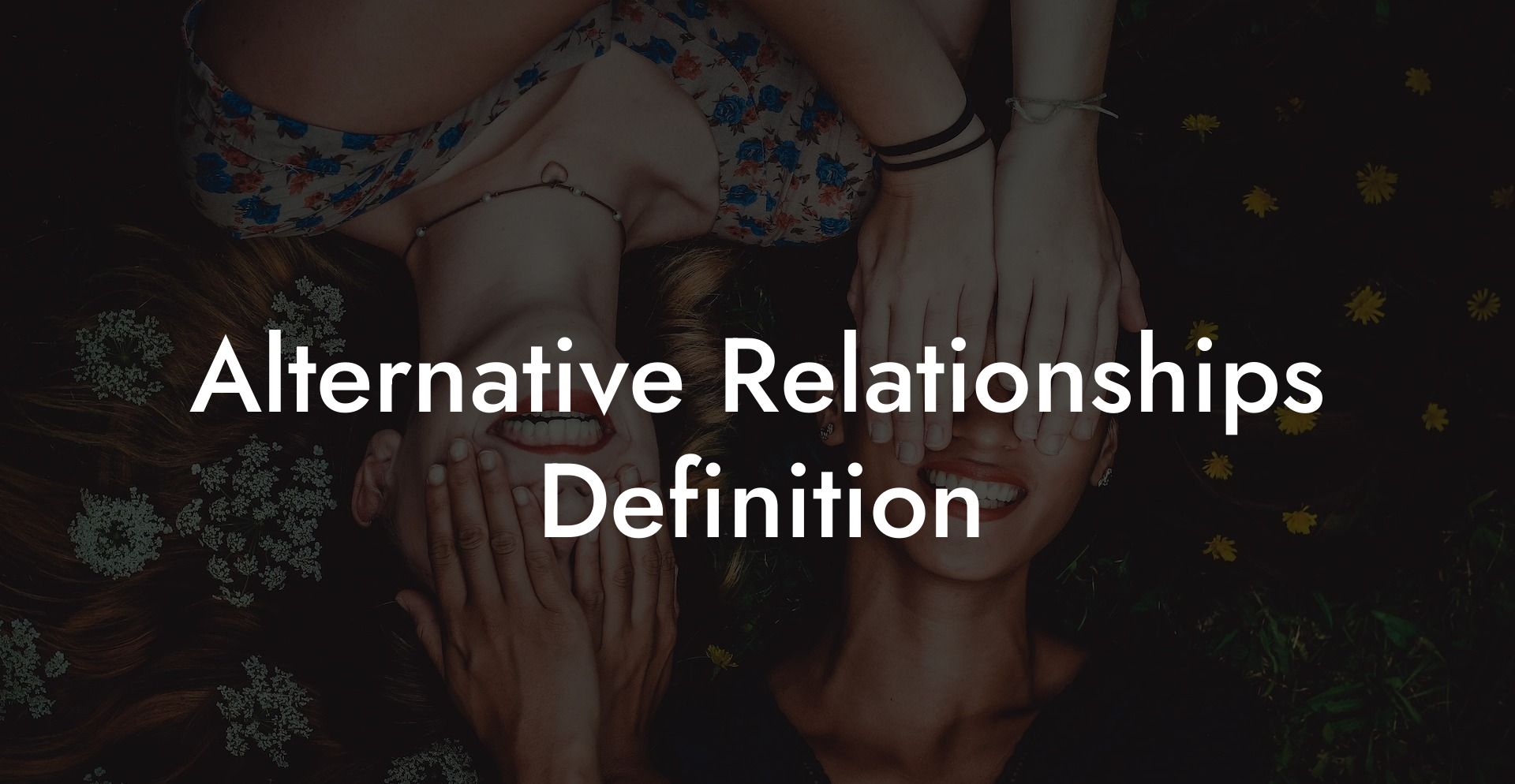
Imagine a universe where love isn’t limited to a single narrative, a world where relationships defy the outdated scripts of tradition and instead burst forth in a kaleidoscope of connection, passion, and freedom. Welcome to the realm of alternative relationships, where the rules are as fluid as your favorite playlist and where every connection is a unique masterpiece waiting to be created. This guide to alternative relationships: definition & meaning is your all-access pass to understanding what it truly means to embrace relationships that diverge from the conventional. Get ready to explore the history, types, benefits, challenges, and practical strategies for thriving in relationships that break free from monogamous norms, all while having a few laughs along the way.
Quick Links to Useful Sections
- What Are Alternative Relationships?
- Defining the Concept
- Historical and Cultural Shifts
- From Tradition to Transformation
- Types of Alternative Relationships
- Exploring the Spectrum
- Philosophical Underpinnings and Core Values
- Love as an Infinite Resource
- Ethical Non-Monogamy: Consent, Transparency, and Mutual Respect
- Flexibility and Adaptability
- Benefits of Alternative Relationships
- Diverse Emotional and Practical Support
- Enhanced Personal Growth and Self-Awareness
- Creative Freedom in Relationship Structures
- Breaking Down Social Barriers and Stereotypes
- Challenges and Considerations
- Emotional Complexities and Jealousy
- Time Management and Scheduling Conflicts
- Negotiating Evolving Boundaries
- Social Stigma and External Pressures
- Strategies for Success in Alternative Relationships
- Foster Open and Honest Communication
- Establish Clear, Adaptable Boundaries
- Leverage Digital Tools
- Invest in Self-Care and Personal Growth
- Build a Supportive Community
- Seek Professional Guidance When Needed
- Real-Life Success Stories
- Case Study: Alex’s Journey to Emotional Balance
- Case Study: Casey’s Path to Clarity
- Expert Insights on Alternative Relationship Boundaries
- FAQ: Your Alternative Relationships Questions Answered
What Are Alternative Relationships?
Defining the Concept
Alternative relationships refer to any relationship structure that deviates from traditional, monogamous pairings. This umbrella term encompasses a broad range of models, including polyamory, open relationships, relationship anarchy, swinging, and more. At its core, alternative relationships are defined by a willingness to challenge societal expectations and to explore diverse forms of intimacy, commitment, and connection.
Rather than subscribing to the notion that true love can only be shared between two people, alternative relationships celebrate the possibility that love is abundant and multifaceted. Whether it’s engaging in multiple consensual romantic connections (polyamory), keeping relationships fluid and non-hierarchical (relationship anarchy), or opening up a couple’s bond to external partners (open relationships and swinging), alternative relationships are about crafting a love life that fits your unique personality and desires.
Historical and Cultural Shifts
From Tradition to Transformation
For centuries, the dominant relationship model in many parts of the world has been monogamy, often underpinned by cultural, religious, and legal institutions. However, historical records reveal that alternative relationship structures have existed in various forms, from the communal living arrangements of indigenous peoples to the polygamous unions of ancient civilizations. What we now call alternative relationships are, in many ways, a revival and reinvention of those diverse practices.
The modern alternative relationship movement emerged as a countercultural response to rigid, exclusive models of love. Influenced by feminist, sexual liberation, and LGBTQ+ movements, the idea that love could be non-exclusive and multi-dimensional took hold in the late 20th century. Today, alternative relationships are celebrated in many progressive communities, where the emphasis is on consent, communication, and authenticity.
Types of Alternative Relationships
Exploring the Spectrum
Alternative relationships are not a one-size-fits-all model; they encompass a variety of configurations, each with its own unique dynamics. Some of the most common forms include:
- Polyamory: Engaging in multiple loving, consensual relationships simultaneously, where all partners are aware of and consent to the arrangement.
- Open relationships: In which partners maintain a primary relationship while also engaging in other consensual sexual or romantic encounters.
- Relationship anarchy: A model that rejects traditional relationship hierarchies and allows connections to form organically, without predefined labels or structures.
- swinging: Where couples engage in consensual sexual activities with others, typically focusing on recreational encounters without the intention of forming long-term romantic bonds.
- Non-Traditional Family Structures: Arrangements that go beyond the nuclear family, including communal living, co-parenting networks, and blended family models that challenge conventional norms.
Each of these models offers a distinct approach to intimacy and commitment, reflecting the diverse ways in which individuals choose to express love and connection.
Philosophical Underpinnings and Core Values
Love as an Infinite Resource
A central tenet of alternative relationships is the belief that love is not a limited commodity but an infinite resource that grows the more you share it. This philosophy challenges the scarcity mindset that often underlies traditional monogamous models. Instead of competing for a finite amount of love and attention, alternative relationships embrace the idea that every connection can add something valuable and enriching to your life.
This mindset promotes a more inclusive view of love, where each relationship is celebrated for its unique contributions, whether it offers emotional security, intellectual stimulation, or physical passion.
Ethical Non-Monogamy: Consent, Transparency, and Mutual Respect
Ethical non-monogamy is the backbone of most alternative relationships. It emphasizes the importance of free, informed consent; transparency in all interactions; and a deep respect for each partner’s autonomy. These core values ensure that every relationship is built on trust and that all parties have the freedom to express their desires and boundaries.
For example, in a polyamorous arrangement, open communication about emotional needs and boundaries is essential. Consent isn’t a one-time checkbox but an ongoing process that requires regular reaffirmation as relationships evolve.
Flexibility and Adaptability
One of the most liberating aspects of alternative relationships is their inherent flexibility. Life is unpredictable, and as personal circumstances change, so too can the nature of your relationships. Alternative relationship models encourage adaptability, allowing partners to renegotiate boundaries, redefine roles, and grow together in a way that suits their evolving needs.
This adaptability ensures that your relationships remain vibrant and resilient, capable of weathering the changes that life inevitably brings.
Benefits of Alternative Relationships
Diverse Emotional and Practical Support
Alternative relationships offer the advantage of a rich, diverse support network. Instead of relying on a single partner for all your emotional needs, you can draw on a variety of connections that each bring something different to the table. Whether it’s the stability of a long-term partner, the spontaneity of a casual connection, or the deep friendship that underpins many poly relationships, you benefit from a mosaic of support.
This diversity not only helps you navigate life’s challenges more effectively but also enriches your overall experience of love, making it more layered and nuanced.
Enhanced Personal Growth and Self-Awareness
Engaging in alternative relationships requires, and fosters, continuous self-reflection. Managing multiple connections encourages you to delve into your own emotional needs, insecurities, and desires. Many individuals report that alternative relationships have helped them develop a greater sense of self-awareness and emotional resilience.
This journey of personal growth often translates into improved communication skills, better conflict resolution, and a deeper understanding of what truly brings you joy.
Creative Freedom in Relationship Structures
One of the most exciting benefits of alternative relationships is the creative freedom they offer. Without the constraints of traditional, monogamous frameworks, you have the opportunity to design relationships that genuinely reflect your personality and lifestyle. Whether you prefer the fluidity of relationship anarchy or the structured approach of polyamory, the choice is yours.
This creative expression in how you form and maintain relationships can lead to more authentic, fulfilling connections, tailored precisely to your individual needs.
Breaking Down Social Barriers and Stereotypes
By embracing alternative relationships, you contribute to a broader cultural shift that challenges conventional ideas about love, family, and commitment. Your lifestyle becomes a statement, an act of rebellion against outdated norms. This, in turn, helps to create a more inclusive and accepting society.
As more people become aware of the benefits and possibilities of alternative relationships, social stigma diminishes, paving the way for a future where diverse forms of love are celebrated.
Challenges and Considerations
Emotional Complexities and Jealousy
One of the primary challenges of alternative relationships is managing the emotional complexities that can arise from multiple connections. Jealousy, insecurity, and feelings of inadequacy are natural responses, even in the most ethically non-monogamous settings.
It’s important to acknowledge these feelings as part of the human experience and to address them through honest communication, self-reflection, and, if needed, professional support. Viewing jealousy as an opportunity to explore your own emotional triggers can lead to deeper self-understanding and improved relationship dynamics.
Time Management and Scheduling Conflicts
Balancing multiple relationships requires careful time management. With various commitments vying for your attention, it can be challenging to ensure that every connection receives the care and quality time it deserves. Without effective scheduling, there’s a risk of burnout or feelings of neglect among partners.
Utilizing digital tools such as shared calendars and scheduling apps can help you coordinate your time and maintain a balanced approach to nurturing your relationships.
Negotiating Evolving Boundaries
Since alternative relationships are inherently fluid, the boundaries you set may need to be renegotiated over time. This process can be emotionally taxing and may sometimes lead to misunderstandings or conflict if not handled with care.
Regular check-ins and open dialogue are essential for ensuring that all parties feel heard and that boundaries are adjusted to reflect the current needs and circumstances.
Social Stigma and External Pressures
Despite increasing acceptance, alternative relationships still face social stigma and cultural resistance. Friends, family, and the broader community may hold preconceived notions about what relationships should look like, which can create external pressures and internal conflicts.
Building a supportive network of like-minded individuals and engaging in community advocacy can help counteract these pressures, providing validation and a sense of belonging.
Strategies for Success in Alternative Relationships
Foster Open and Honest Communication
Regular, transparent dialogue is crucial. Set up a routine for check-ins, whether it’s through scheduled meetings or digital communications, to discuss your feelings, review boundaries, and address any emerging issues. Use “I” statements to express your needs clearly, and practice active listening to ensure that every partner feels understood.
Establish Clear, Adaptable Boundaries
Define your boundaries early on and document them if necessary. Recognize that these boundaries are not fixed, they are meant to evolve as relationships grow. Regularly revisit and adjust your agreements to reflect changes in your emotional needs or life circumstances.
Leverage Digital Tools
Digital tools like shared calendars (Google Calendar), scheduling apps (Trello or Notion), and digital journals can help you organize your time and keep track of commitments. These tools not only prevent scheduling conflicts but also serve as a reference for your agreed-upon boundaries and plans.
Invest in Self-Care and Personal Growth
Make self-care a non-negotiable part of your routine. Engage in activities that nourish your body, mind, and spirit, whether it’s exercise, meditation, or pursuing creative hobbies. Regular self-reflection through journaling or therapy can also help you understand and manage your emotions better.
Build a Supportive Community
Connect with others who understand and practice alternative relationship models. Join online forums, local meet-ups, and polyamory groups where you can share experiences, exchange advice, and gain emotional support. A strong community can help you feel validated and less isolated in your journey.
Seek Professional Guidance When Needed
If you find the emotional complexities overwhelming, consider seeking support from a therapist or relationship coach experienced in non-traditional relationships. Professional guidance can offer personalized strategies for managing jealousy, renegotiating boundaries, and fostering healthy communication.
Real-Life Success Stories
Case Study: Alex’s Journey to Emotional Balance
Alex, who has navigated a series of alternative relationships over the years, shares that the key to managing multiple connections was establishing clear boundaries and committing to regular communication. By using shared calendars and engaging in weekly check-ins, Alex was able to maintain a balanced and fulfilling network of relationships. This process not only alleviated feelings of jealousy but also led to significant personal growth and a deeper understanding of their own emotional needs.
Case Study: Casey’s Path to Clarity
Casey initially struggled with the complexities of juggling multiple partners and found that unclear boundaries led to conflicts and insecurity. After attending a polyamory workshop and engaging in guided self-reflection, Casey redefined their approach to boundaries. With the support of a close-knit community and professional counseling, Casey was able to create a structured yet flexible framework that improved communication and enriched every relationship.
Expert Insights on Alternative Relationship Boundaries
Relationship experts emphasize that the art of setting boundaries is the cornerstone of successful alternative relationships. Dr. Elena Rivera, a therapist specializing in non-monogamous dynamics, explains, “Boundaries are not barriers, they’re the support beams of your relationship structure. When set with care and communicated openly, they allow for freedom, growth, and deep connection.”
Relationship coach Marcus Lee adds, “It’s essential to view boundary-setting as an evolving process. As your relationships grow, so do your needs. Embrace the change, and use it as an opportunity to deepen your connections and enhance your self-awareness.”
FAQ: Your Alternative Relationships Questions Answered
1. What are alternative relationships?
Alternative relationships are relationship models that deviate from traditional monogamy. They include forms such as polyamory, open relationships, relationship anarchy, swinging, and other non-traditional arrangements.
2. Why are alternative relationships becoming more popular?
As society evolves, many people seek more flexible and authentic ways to express love. Alternative relationships allow for diverse emotional and romantic connections without the constraints of exclusivity.
3. What defines an alternative relationship?
An alternative relationship is characterized by consensual non-monogamy, open communication, and the willingness to explore diverse forms of connection that go beyond traditional monogamy.
4. How do alternative relationships differ from traditional relationships?
Traditional relationships typically involve exclusive, dyadic bonds. Alternative relationships, on the other hand, embrace multiple connections, offering varied emotional support and opportunities for personal growth.
5. What are the key values in alternative relationships?
Core values include free consent, transparency, mutual respect, flexibility, and ongoing self-awareness. These principles ensure that every relationship is ethical, supportive, and fulfilling.
6. Can alternative relationships be as fulfilling as monogamous ones?
Absolutely. Many people find that alternative relationships provide a richer tapestry of emotional support and personal growth, leading to deeply fulfilling connections.
7. How do I manage jealousy in alternative relationships?
Effective management of jealousy involves honest communication, self-reflection, and sometimes professional guidance. Recognizing jealousy as a natural emotion is the first step toward addressing it constructively.
8. What role does communication play in alternative relationships?
Communication is critical. Regular, transparent dialogue helps prevent misunderstandings, ensures that boundaries are respected, and fosters trust among all partners.
9. How do I balance multiple relationships in my daily life?
Time management tools such as shared calendars, scheduling apps, and digital journals can help you allocate quality time for each connection while maintaining your own well-being.
10. Where can I find more resources on alternative relationships?
Resources such as books ("The Ethical Slut", "More Than Two"), podcasts (e.g., “Multiamory”), and online communities on Reddit and Facebook are excellent starting points.
Resources and Community Support: Your Next Steps in Exploring Alternative Relationships
- Books: Start with classics like "The Ethical Slut" and "More Than Two" for foundational insights into ethical non-monogamy.
- Podcasts: Tune in to podcasts like "Multiamory" and "Polyamory Weekly" for real-life stories and expert advice.
- Websites and Blogs: Visit Polyamory.com, MoreThanTwo.com, and other dedicated sites for articles, event listings, and practical tips.
- Online Communities: Join Reddit (e.g., r/polyamory), Facebook groups, and polyamory forums to connect with others.
- Workshops and Conferences: Attend polyamory workshops, webinars, and conferences to deepen your understanding and network with like-minded individuals.
- Therapy and Counseling: Seek out professionals who specialize in non-monogamous relationships for personalized guidance and support.
With a wealth of resources at your fingertips, you’re well-equipped to navigate the diverse and exciting world of alternative relationships. Embrace your journey, connect deeply, and let the endless possibilities of love enrich your life.
Attachment Styles In Non Monogamous Relationships
Boundaries Versus Rules In Practice
Common Myths About Ethical Non Monogamy
Communication And Agreements
Compersion And Shared Joy
Conflict Resolution In Multi Partner Dynamics
Consent As The Foundation Of Non Monogamous Relationships
Core Values That Define Ethical Non Monogamy
Creating Agreements That Can Evolve
Emotional Regulation In Complex Relationships
Ethical Non Monogamy Across Different Cultures
Fear Of Abandonment And Reassurance
Hierarchical Versus Non Hierarchical Models
Honesty Versus Oversharing
How Ethical Non Monogamy Differs From Cheating
How Media Representation Shapes Public Perception
How Often To Revisit Agreements
How To Choose A Structure That Fits
How To Start The Ethical Non Monogamy Conversation
Jealousy As A Skill Building Opportunity
Managing Insecurity And Comparison
Monogamish Relationships
Navigating Mismatched Desires
Open Relationships Explained
Parallel Versus Kitchen Table Dynamics
Polyamory And Multiple Loving Relationships
Processing Shame And Social Conditioning
Psychology And Emotional Work
Relationship Anarchy Principles
Repairing Communication Breakdowns
Self Worth Outside Relationship Status
Setting Intentions Before Opening A Relationship
Sexual Health Agreements And Testing Norms
Sexual Health And Safety
Solo Polyamory And Autonomy
Swinging As A Social And Sexual Practice
The Difference Between Structure And Freedom
The History And Cultural Roots Of Ethical Non Monogamy
Types And Relationship Structures
What Ethical Non Monogamy Is And What It Is Not
When Non Monogamy Activates Trauma
Why People Choose Ethical Non Monogamy
Lost & confused by all of the terms, types and seemingly made up 3 letter acronyms?? We've got you. Check out our Ethnical Non-Monogamy Dictionary >>
Useful Interruption: Not sure which relationship vibe fits you best? Take our Relationship Test, it’ll give you the real insight into your natural relationship style. Then, dive into our binge-worthy guides (from the tried-and-true to the “wait, that’s a thing?”) and find the perfect relationship type for your life:
- Monogamy
- Open Relationships
- Ethical Non-Monogamy
- Solo Polyamory
- Non-Hierarchical Polyamory
- Hierarchical Polyamory
- Relationship Anarchy
- Swinging
Now back to the main article but yeah take the test...

